Heliamphora Profile
Written by Joy
Nov 06 2020
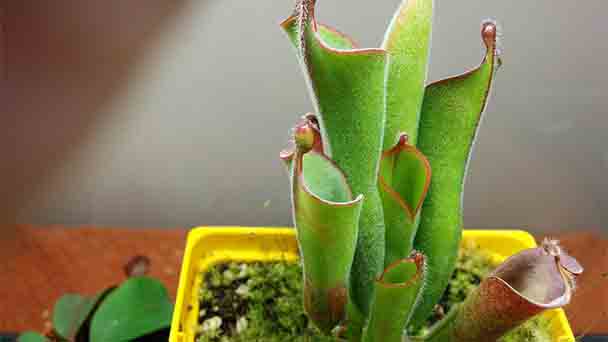
Heliamphora is an insectivorous plant. There are 9 species and numerous subspecies, varieties and artificially cultivated species, all of which are herbs. The leaves of Heliamphora are very peculiar and interesting. Some are tubular, some are trumpet-shaped, and some are pot-shaped. People use the name of the bottle and collectively call them Sarracenia. The insect-catching bottle is lying in the grass or standing upright. These bottle-shaped leaves are traps for insects. Heliamphora is very beautiful. The bottle-shaped leaves form a circle like a rosette. In spring, a long flower scape protrudes from it. A red flower that hangs down like small bowl blooms at the top of the flower scape. Heliamphora is produced in North America, such as the East Coast of the United States, Texas, the Great Lakes region, and southern Canada and Georgia.
Heliamphora morphological characteristics
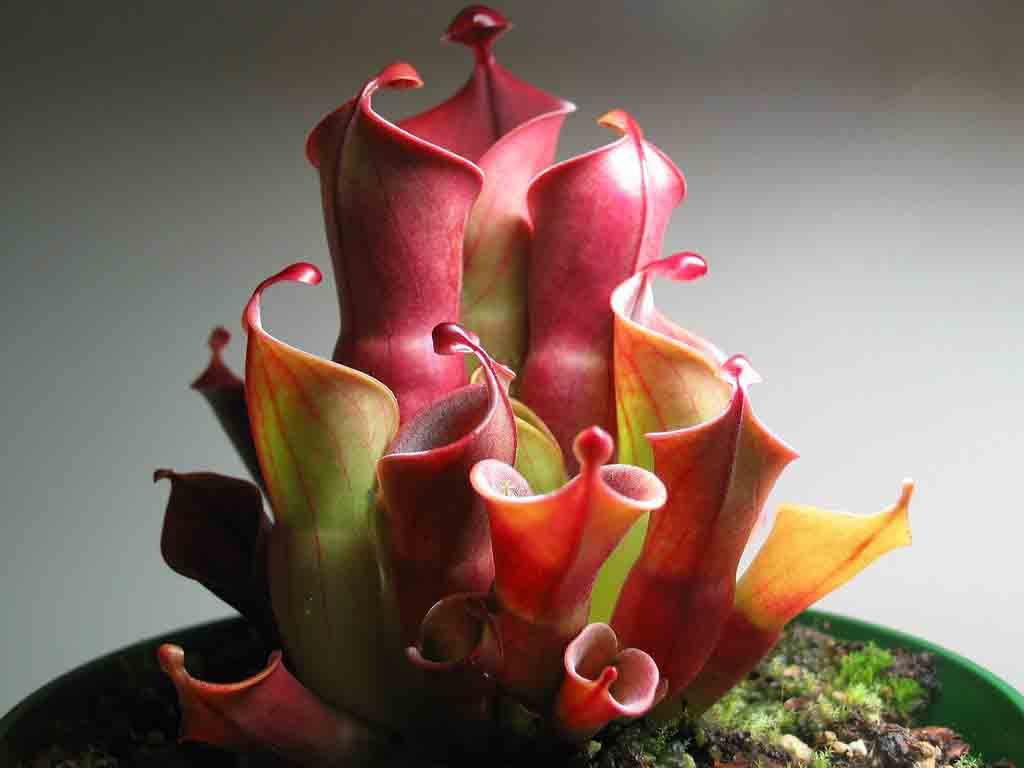
The flowers of Heliamphora are bisexual. The inflorescence is drawn from the base of the leaf. It is a loose raceme composed of several large flowers. The flower core is composed of 1 helmet-like stigma, 3 to 5 compartments of the ovary and 50 to 80 stamens. It is composed of yellow-green or dark red flowers, with 5 sepals, located below the petals. The fruit is a capsule, which contains many small seeds, which automatically crack and pop out when mature.
Heliamphora growth habit and growing environment and distribution
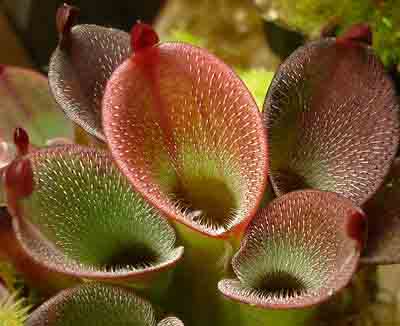
Heliamphora is distributed from the Canadian Labrador Peninsula close to the Arctic Circle to the Atlantic coast of the Florida Peninsula in the southeastern corner of the United States. Including the U.S. Alabama, Georgia, North Carolina, Louisiana, Mississippi, Texas, Alabama, Florida, Georgia, North Carolina, South Carolina, Virginia, Missouri, South Carolina and Georgia are also distributed.
Heliamphora cultivation
Materials and pots
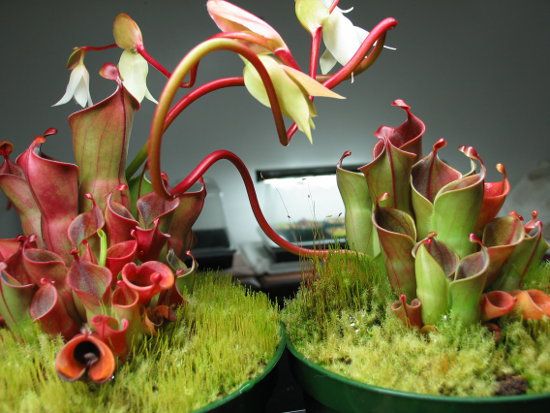
In terms of cultivation pots, as Heliamphora needs a little soaking in water to grow better, it is better to choose a half waist water pot for planting. This kind of pot is rare in the market, so you can make it yourself. The method is to put a daffodil pot on the ordinary unburned red brick pot or plastic pot. The key is that the daffodil pot should be in the upper half of the planting pot. So that the water leaked after watering is immersed in the waist of the planting pot. In addition, potted plants of Sarracenia are generally planted in hanging pots or plastic pots. After buying back, choose a lumbar water dish for them, which will be very beneficial to cultivate Heliamphora after the mouth.
Temperature
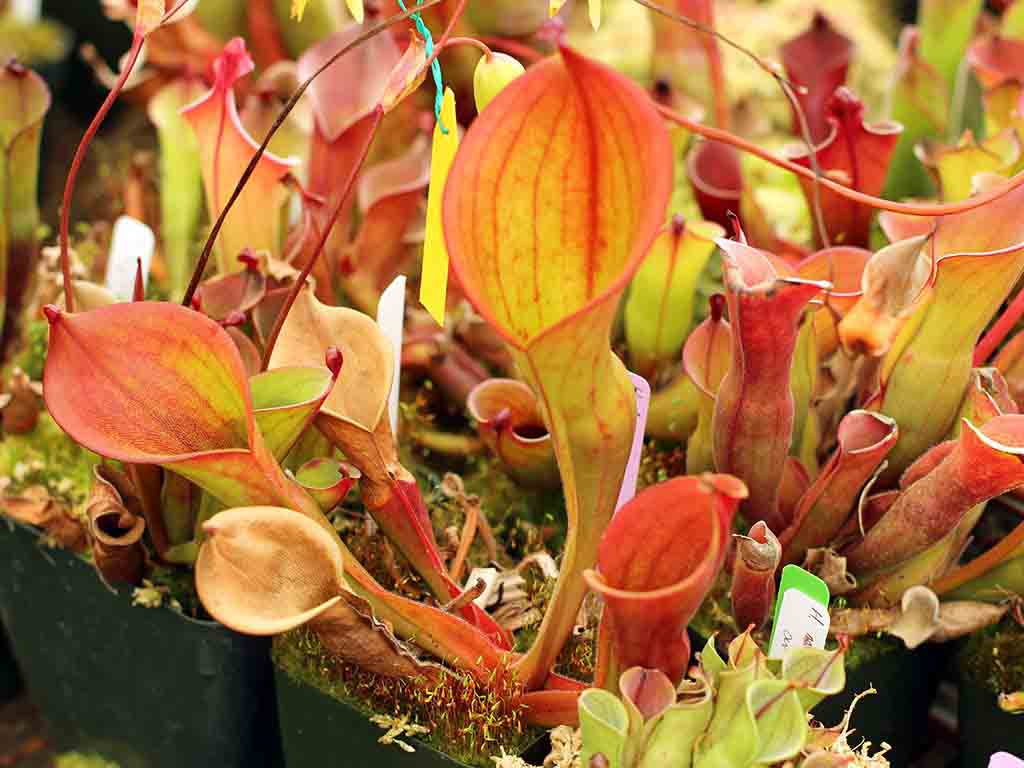
Watering and humidity
Heliamphora is a wet carnivorous plant that can grow in the wild for many years in the swamp. Therefore, it needs an extremely humid environment for its growth to flourish. Under artificial cultivation conditions, if you use waist-water jacketed pots for planting, you can directly pour water into the jacketed pots or until the jacketed pots are full. For example, when planting in a leaky ordinary flower pot, keep watering and spraying once a day during the vigorous growth season to create high humidity environmental conditions, especially in hot summer, the watering frequency can be appropriately increased to 2 times to compensate The hot sun quickly evaporates the lack of water. When Heliamphora is dormant in winter, watering can be controlled and the plant material in the pot can be kept slightly moist.Illumination
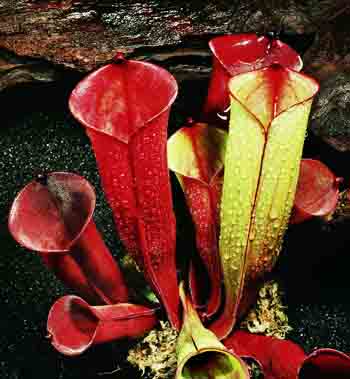
Fertilize
In the wild, Heliamphora grows in barren marshes and uses its insect sac to trap insects as supplementary nutrients for absorption. In the artificial cultivation environment, although there are many sources of insects, in order to make the potted Heliamphora grow up quickly, regular fertilization is essential. Generally speaking, in the period of vigorous growth, fertilization should be done every 3 to 4 weeks. The application method can be spray or leaching, or the diluted liquid fertilizer can be poured into the insect sac for absorption. When someone cultivates Heliamphora, they manually grab some dead insects and put them in their traps for supplementary nutrient absorption. What's more, the minced pork or beef cubes are put into the insect-trapping sac, thinking that they can be digested and absorbed. In fact, this is counterproductive. Not only the effect of supplementing nutrients is not achieved, but also due to the rot of the meat. Withered early, that is, a large hole was corroded by rotten meat. The fertilization concentration of Sarracenia is generally 2000-5000 times. The application of a thinner liquid fertilizer is beneficial to the rapid absorption of Heliamphora plants, especially when the liquid fertilizer is poured into the insect sac, pay more attention to the concentration. Once Heliamphora reaches the winter dormant period, fertilization can be stopped until the spring warmth returns to life in the coming year.Latest Updated
- Benefits of Bugleweed - 7 Science-backed Health Benefits
- Bugleweed Dangers & Side Effects - Is It Poisonous?
- How to Plant Evergreen Trees - What You Should Know
- When to Plant Evergreens - Grow Guide for Evergreen Trees
- 12 Wonderful Evergreen Shrubs for Your Garden
- 12 Popular Evergreen Plants with Pictures for Beginners
- When And How To Prune A Lilac Bush Like a Pro
- How to Grow & Care for Lilac Vine (Hardenbergia Violacea)
- Japanese Lilac Tree (Syringa Reticulata) Care & Propagation Guide
- Shumard Oak Pros and Cons - What to Know
Popular Articles
- Winter maintenance of Antirrhinum Majus
- How to Grow Terminalia Mantaly Tree
- How to Grow and Care for Crossostephium Chinense
- How to grow Antirrhinum Majus in spring
- Peristeria Elata (Dove Orchid) Profile: Info & Care Guide
- Underwatered Snake Plant (Sansevieria Trifasciata) - Signs And How To Fix
- How to Care for Brazilian Jasmine Plant (Mandevilla Sanderi)
- How to Grow & Care for Graptopetalum Purple Delight in Summer
- Rosa Chinensis (China Rose): Plant Growing & Care Tips
- How to Care for Baby Sun Rose (Aptenia Cordifolia)